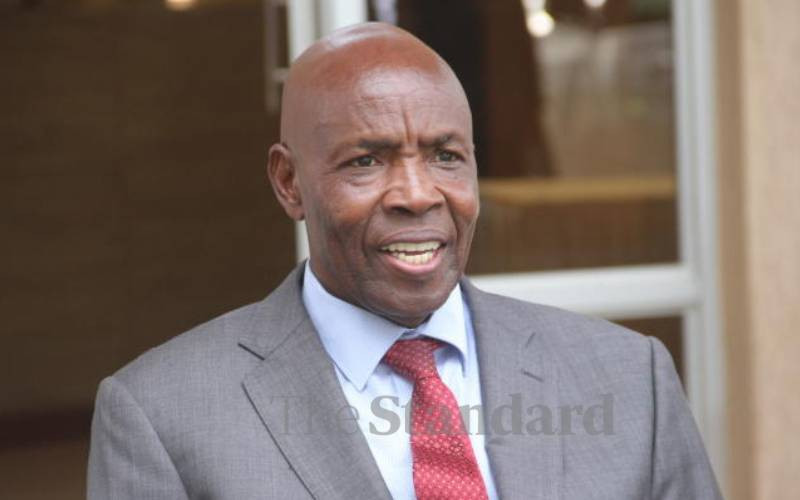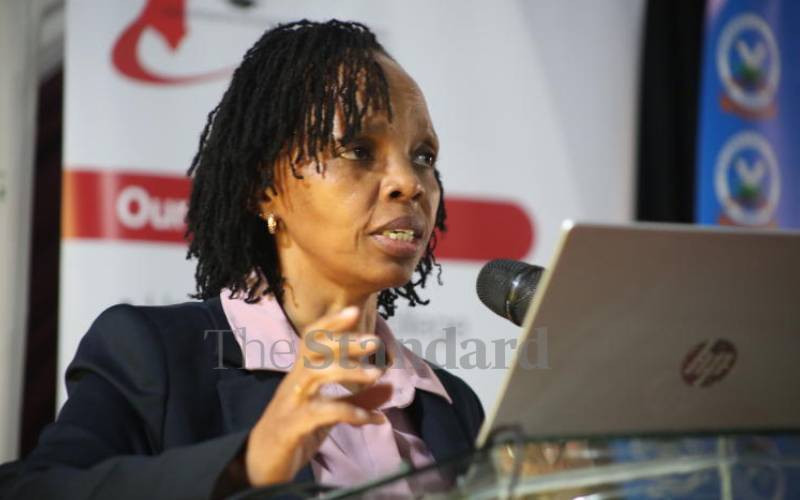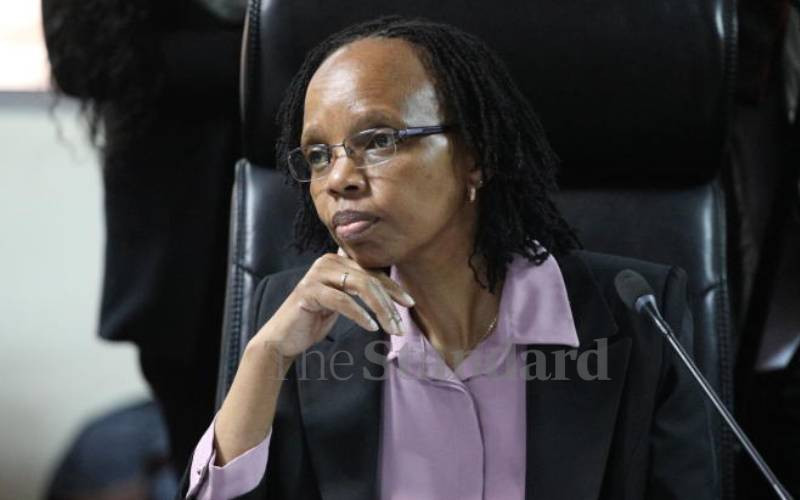 |
Students walk towards Kenyatta University’s main entrance. KU has been allocated
the highest number of students with 5,480 admissions. The institution’s
declared capacity is 5,454. [PHOTO: FILE/STANDARD] |
NAIROBI, KENYA: Over 72,000 candidates who sat last year’s Form Four examinations have been selected to join various public universities and colleges next month.
Documents from the Kenya Universities and Colleges Central Placement Service (KUCCPS) indicate that 56,937 students have been placed in public universities.
It also reveals that for the first time, the Government will sponsor 15,393 candidates to pursue various diploma courses in middle level colleges across the county.
KUCCPS, which replaced the Joint Admissions Board (JAB) as envisaged under Section 55 of the Universities Act, approved the admissions following a meeting Monday.
However, over 66,000 candidates who sat last year's Kenya Certificate of Secondary Education exam failed to attain the minimum qualifying grade.
Of the 449,216 who sat last year's examination, over 123,000 candidates scored the minimum university entry grade of C plus.
"Some of those who totally missed places in universities have already been placed in diploma courses. The rest are expected to be admitted under self-sponsored programmes," said a senior official familiar with the placement process.
The Service lowered the minimum university entry requirement to B- (minus) of 58 points for female students and grade B of 60 points for male students. Candidates with grade C- (minus) were also eligible for diploma programmes. Some 232, 699 candidates scored C- and above.
Kenyatta University (KU) has been allocated the highest number of university students with 5,480 admissions. The institution's declared capacity is 5,454.
The University of Nairobi (UoN) will admit 5,053 candidates against a capacity of 5,031 while Moi University has been assigned 5,030 students. Egerton is allocated 2,767 while Jomo Kenyatta University of Agriculture and Technology (JKUAT) will take 2,597 against the institution's capacity of 2,583. Maseno University will enrol 2,926 and Technical University of Kenya is assigned 1,827.
A senior official who attended the board meeting Monday said some institutions were allocated more candidates as a result of affirmative action.
"Issues of gender, persons with disability and marginalised groups were considered and this saw some institutions get slightly more candidates," said the source who is not authorised to speak to the media.
The document also states the cut-off points for the various degree and diploma programmes across the institutions. Bachelor of Medicine at the University of Nairobi has a cut off point of 45.790 compared to 45.551 at Moi University.
The cut-off points for Bachelor of Science (nursing) programme at Moi University is put at 44.022. This compares to 44.790 at UoN and 43.916 at JKUAT. Bachelor of Science (electrical and electronic engineering) at Kenyatta University has a cut off point of 44. 654 while the same course at JKUAT has a cut off point of 43.916.
Stay informed. Subscribe to our newsletter
The source also indicated that no candidates who scored grade A or its equivalent was awarded a diploma course.
"The board meeting was told yesterday that diploma application options for these candidates were ignored and they were given degree programmes. And those who did not qualify were allocated degree programmes in unfilled capacities," said the officer.
Parents and a section of students had raised concern that students who scored grade A or A- were allocated diploma courses. Students were also offered slots in teacher training colleges and polytechnics.
However, the source says middle-level colleges did not attract many students. Only 132 candidates applied to join Kagumo Teachers Training College against the institution's capacity of 300. Kibabii Diploma Teachers Training College only attracted 105 students against a capacity of 275. And Kenya Technical Teachers College attracted only 183 candidates against a declared capacity of 1,300.
"This is the first time we asked students to directly apply to be placed and the major concern is that not many candidates applied," said the source. But the official added institutions would be allowed to take details of interested students and forward them to KUCCPS.
"Once the colleges send their list to the Service they will be placed based on their performance and available space," added the source.
Also for the first time, the Service has placed students to the Kenya Medical Training Colleges (KMTC). Some 3,740 students have been offered places in KMTC institutions. Diploma in community health nursing attracted 1,370 candidates, this being the highest number of admissions.
Diploma in clinical medicine will see the second highest number of 1,140 students. Eldoret Polytechnic only attracted 351 students against its capacity of 1,220. Kisumu Polytechnic only attracted 566 candidates, this being half its capacity.
Prof Musyimi Ndetei chairs the board with John Muraguri as the acting chief executive officer. Vice-chancellors Prof Mabel Imbuga (JKUAT), George Magoha (UoN), Miriam Mwita (Baraton University), Noah Midamba (KCA University) and David Some (Moi University) are members of the service board.
Higher Education Loans Board Chief Executive Charles Ringera, Edwin Tarno and the two principal secretaries of Education and Finance are also members of the board. Education Cabinet Secretary Prof Jacob Kaimenyi gazetted the names in January this year.
Under its expanded mandate, KUCCPS is tasked with placing government-sponsored students in both public and private institutions of higher learning. The board has, however, not placed students in private universities this year.
 The Standard Group Plc is a
multi-media organization with investments in media platforms spanning newspaper
print operations, television, radio broadcasting, digital and online services. The
Standard Group is recognized as a leading multi-media house in Kenya with a key
influence in matters of national and international interest.
The Standard Group Plc is a
multi-media organization with investments in media platforms spanning newspaper
print operations, television, radio broadcasting, digital and online services. The
Standard Group is recognized as a leading multi-media house in Kenya with a key
influence in matters of national and international interest.
 The Standard Group Plc is a
multi-media organization with investments in media platforms spanning newspaper
print operations, television, radio broadcasting, digital and online services. The
Standard Group is recognized as a leading multi-media house in Kenya with a key
influence in matters of national and international interest.
The Standard Group Plc is a
multi-media organization with investments in media platforms spanning newspaper
print operations, television, radio broadcasting, digital and online services. The
Standard Group is recognized as a leading multi-media house in Kenya with a key
influence in matters of national and international interest.









